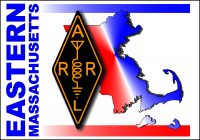 An Easton, MA Amateur has announced plans to install a remote base system in Iraq. Keith Lamonica, W7DXX has obtained the call sign YI9DXX and identified a location to house the installation. In addition, Lamonica has recruited willing Iraqi Amateurs to help maintain the remote base.
An Easton, MA Amateur has announced plans to install a remote base system in Iraq. Keith Lamonica, W7DXX has obtained the call sign YI9DXX and identified a location to house the installation. In addition, Lamonica has recruited willing Iraqi Amateurs to help maintain the remote base.
“A group of us: Stan, W4MQ, Pete, W6PJ, George, K4GM, and I have gotten together with the idea of installing an Internet remote base in Baghdad, Iraq,” says Lamonica. “Working with the kind help of Diya Al Asadi, President of the Iraqi Amateur Radio Society and Mr. John B. Lyons, Chief of Staff, Office of Communication, Iraq Reconstruction Office, I have been able to obtain a license and a home for the remote base… Our group will donate [the equipment] to the Iraqi Amateur Radio Society.”
The list includes: a Kenwood TS-2000 transceiver and power supply, a Dell computer, an all-band antenna and coax, an uninterruptable power supply, “rig blaster” and other items.
Lamonica says he’ll personally assure funding to pay for a static IP for the Internet server.
“Once all the equipment is delivered we will set it up here in the U.S. to completely test it out. Then it will be sent either by military transport of DHL to Baghdad,” Lamonica adds.
The group will be constantly tied into YI9DXX Remote by PC-Anywhere so that password files and software can be updated.
The YI9DXX Remote Base System will be a closed system, available only to those control operators who have participated in the group’s existing remote base operations and have shown they can operate in a responsible manner.
“There will be Iraqi amateurs using the system of course,” says Lamonica. “Most of these fellows are in situations where they have no antennas, or dare not to erect any.”
W7DXX adds that his group will be sending more information on the project as it develops.
The ARRL awarded co-awarded Keith Lamonica, W7DXX, Bob Arnold, N2JEU, and Stan Schretter, W4MQ its 2001 Technical Innovation Award for their development of Internet control of remote HF stations with new and unique software and a hardware interface. Their efforts were recognized in an article, “Remote-Controlled HF Operation Over the Internet,” by Brad Wyatt, K6WR, which appeared in the November 2001 issue of QST.

